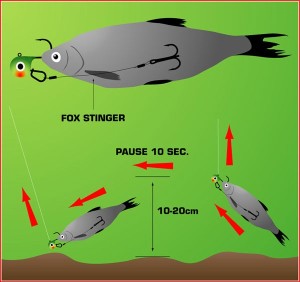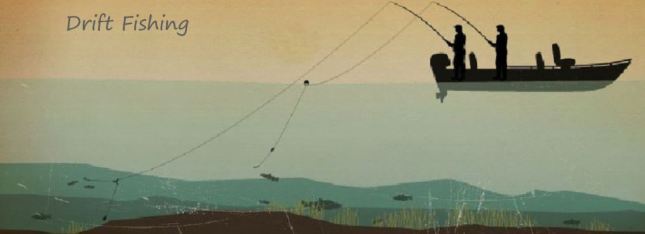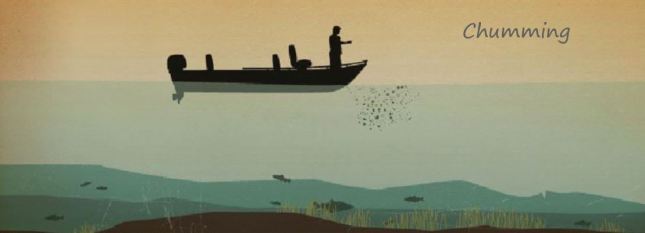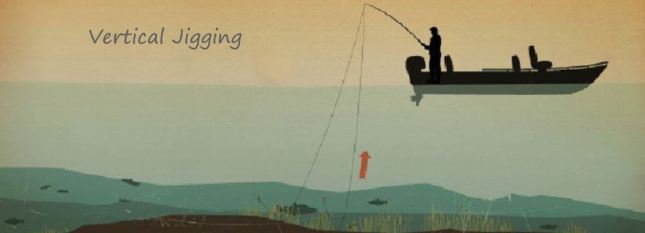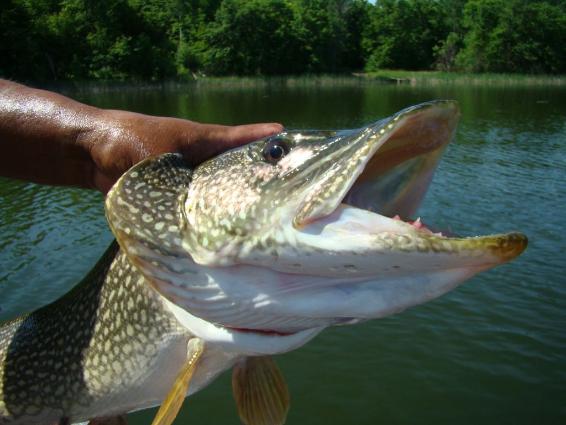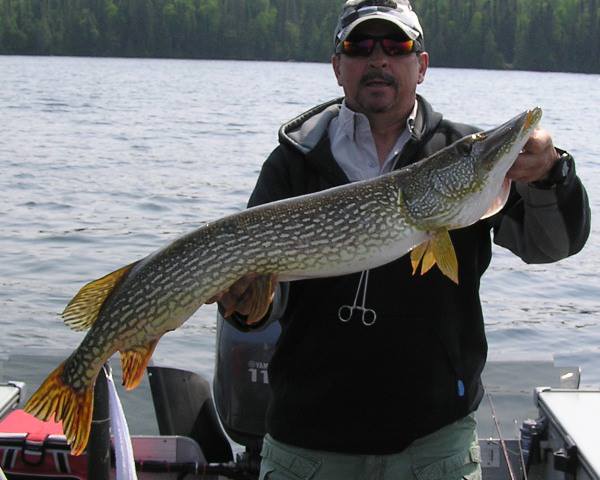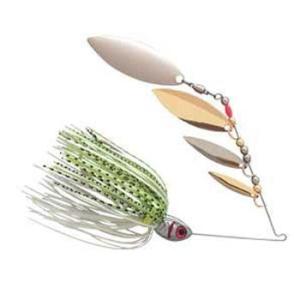 They’re there. You know they’re there. In deeper water, you can see them on your fish finder. Or, in shallow water too skinny to move your boat over the fish without spooking them, you simply know from past experience they’re around. Perhaps some subtle bumps or nudges — but no hook-ups — indicate walleyes are present but just not biting. Or at least just not biting anything that moves. Here’s a simple solution. Don’t move your bait. In other words, bring out your dead.
They’re there. You know they’re there. In deeper water, you can see them on your fish finder. Or, in shallow water too skinny to move your boat over the fish without spooking them, you simply know from past experience they’re around. Perhaps some subtle bumps or nudges — but no hook-ups — indicate walleyes are present but just not biting. Or at least just not biting anything that moves. Here’s a simple solution. Don’t move your bait. In other words, bring out your dead.
Dead sticking — which basically means tossing a jig out, letting it sink to bottom, and then not moving it for a l-o-n-g time, equates to a war of patience and nerves between your giant-size genius brain on one end of the line and a walleye’s peanut-size brain, staring at the other. Guess who has the advantage? Definitely not you! In such conditions, accept some simple facts.
First, walleyes react according to instinct, not thinking. If weather and water and fishing pressure combine and conspire to shut off the bite, amazingly, they’re often all that way. There’s no way you will get all your fishing buddies to all agree on exhibiting the same mood, based of course upon their superior intellect.
Second, because walleyes are reacting (or not reactive!) in negative fashion, you not only can’t outthink them, but you likely won’t be able to razzle-dazzle them with your array of fancy tackle and gadgets. So your best bet is to stick a food item in their faces and outwait them, hoping to trigger some form of subtle response through sheer time exposure rather than clever tactics.
What comes to mind? Well, a slip bobber suspending a lively leech just off bottom is a likely candidate, drifted slowly and subtly through prospective spots. So too would be a split shot rig, with you casting a nose-hooked night-crawler on target, letting it descend to bottom, and allowing it to sit there, wiggling enticingly, with walleyes gathered ’round, eyeballing the worm. Occasionally, you could lift the rod tip a few feet to slide the rig a bit closer to the boat, take up slack, and then set the rod down again, waiting for the rod tip to bend, indicating a strike. Pretty darn patient, especially since both tactics would require first anchoring the boat.
 Are there any slightly more mobile and fractionally more aggressive tactics that might cover a teeny bit more water, especially up in the shallows? Enter dead sticking with a lightweight 1/8-ounce jig, tipped with minnow, half-crawler or leech. Or perhaps even a scented plastic tail (ala bass tactics) although the lack of motion inherent with this system definitely favors live bait in some form, due to its natural lively appearance, scent and taste, even when fished in place.
Are there any slightly more mobile and fractionally more aggressive tactics that might cover a teeny bit more water, especially up in the shallows? Enter dead sticking with a lightweight 1/8-ounce jig, tipped with minnow, half-crawler or leech. Or perhaps even a scented plastic tail (ala bass tactics) although the lack of motion inherent with this system definitely favors live bait in some form, due to its natural lively appearance, scent and taste, even when fished in place.
A DEADLY APPROACH To dead stick a small jig, you needn’t do much different that your normal lift-drop jigging retrieve back to the boat. Except, of course, for the excruciatingly long pauses between lifts of the rod tip. The key is having the confidence to believe a walleye is out there looking at your bait at all times, and to let it sit and soak and tease and tempt and turn that aggravation and exasperation back against the fish, letting the extended pause work in your advantage to eventually fool the walleye into closing the gap, flaring its gills and lightly sucking in the jig. You likely won’t feel much. It might be a tap, but more likely just a sudden slight weight on the end of the line. Tighten up slack while lowering your rod tip to horizontal — if it isn’t already there — and then sweep set the hook. Thus you should try to minimize slack at all times without tempting yourself to unnecessarily jiggle and wiggle the jig.
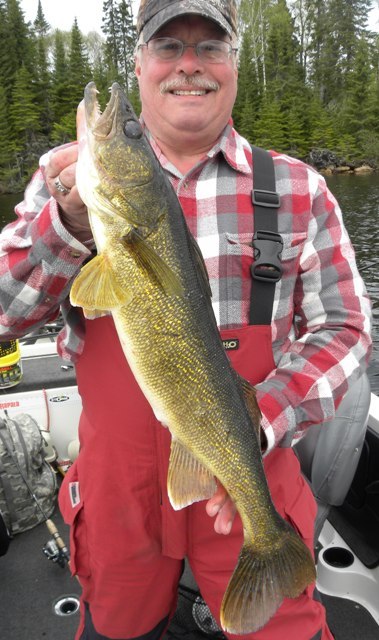 Remember, the extended pause with the jig anchoring the wriggling live bait to the bottom is key to getting bites. The nice thing about dead sticking is that you don’t have to anchor, at least on a calm day. Rather, use your electric trolling motor to creep along, then stop or hover, and make a series of fan casts across a general area to test for the presence of fish. Hopefully, you’ve already established that they’re nearby, because this isn’t a method to be used to locate fish, due to the limited amount of water you’re able to cover. But if you can force yourself into the mode of 30-second pauses between subtle lift-drops of the rod tip, making each cast last at least two or three minutes, then you’re in the dead zone.
Remember, the extended pause with the jig anchoring the wriggling live bait to the bottom is key to getting bites. The nice thing about dead sticking is that you don’t have to anchor, at least on a calm day. Rather, use your electric trolling motor to creep along, then stop or hover, and make a series of fan casts across a general area to test for the presence of fish. Hopefully, you’ve already established that they’re nearby, because this isn’t a method to be used to locate fish, due to the limited amount of water you’re able to cover. But if you can force yourself into the mode of 30-second pauses between subtle lift-drops of the rod tip, making each cast last at least two or three minutes, then you’re in the dead zone.
The perfect tactic for tempting reluctant biters spread across shallow rock or gravel flats within or adjoining spawning areas; sparse sand grass flats emerging from sandy bottoms; rocky or wood-lined reservoir shorelines where walleyes move shallow to feed aggressively in windy conditions and may linger inactive when the weather turns calm; or basically anytime walleyes are up shallow, skittish and not responding to presentations that move. Turn the tables. Fish lures so slowly that they’re virtually motionless. Bring out your dead.
OTHER DEADLY APPROACHES Think about it. Are you fishing through walleyes that aren’t biting? (It’s a terrible thought, isn’t it?) But is there a nagging feeling at the nape of your neck that your offerings are going unappreciated?
Tone things down, speed wise and action wise. Instead of buzzing along a drop-off with a bottom bouncer, spinner and crawler, switch to a bouncer and plain snell, and creep and crawl along, barely moving, even pausing occasionally. Ultraslow movement requires short lines, with the bouncer barely ticking or slightly suspended above bottom, to prevent it from toppling over at rest. Consider using an upright floating bouncer like the Today’s Tackle Foam Walker, which stands up at rest.

Extend the principle to other presentations. Casting neutrally buoyant minnow-imitating crank baits isn’t that far unrelated from dead sticking; you pull, then p-a-u-s-e, before pulling again, letting the bait hang there before a walleye’s eyes. The suspense kills them. A three-way rig lets a floating jig head or simple live bait snell hang in place before a river ‘eye. A drop shot rig suspends a live bait or plastic tail above bottom in lakes and reservoirs. Lack of movement is often a key trigger for catching reluctant walleyes, which brings about a closing thought. Chances are that by this stage in life, however, you’ve been shut down enough times to learn that smooth opening lines don’t guarantee a favorable response and, in fact, can be counter productive. Sometimes, you just have to sit down and do nothing but look good in order to attract attention.
Follow our HUNTING BLOG
WEB RATES FISH HUNT CABINS PHOTOS
